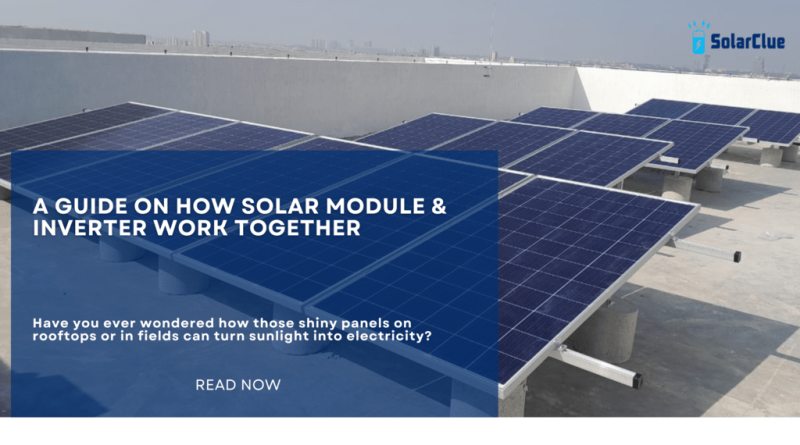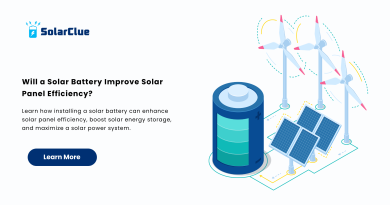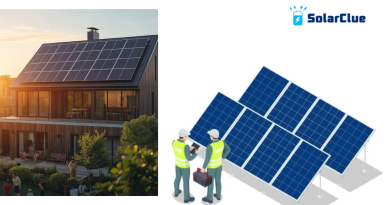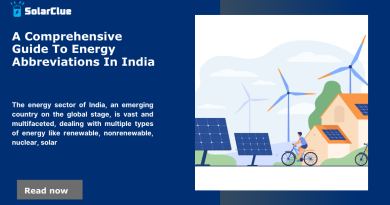A Guide On How Solar module & Inverter Work Together
Have you ever wondered how those shiny panels on rooftops or in fields can turn sunlight into electricity? Today , In this blog let focus into the world of ‘solar modules and inverters’ to understand how they work together to power our homes and businesses with clean energy. Solar module & Inverter are somehow interconnected. Inverters play a crucial role in the system by converting the DC electricity produced by the solar modules into AC electricity that can be used to power household appliances, lights, and other electrical devices. Therefore, without inverters, the electricity generated by solar modules would not be compatible with the electrical systems of buildings.
Table of Contents
Understanding Solar Modules:
Solar modules, also known as solar panels. These are the flat, rectangular structures you see covered in dark blue or black cells. These cells are made from silicon, a material that’s great at converting sunlight into electricity. This electricity is initially in the form of direct current (DC). However, most homes and businesses use alternating current (AC) electricity.
How it works ?
when sunlight hits the solar cells, it knocks electrons loose from the silicon atoms. These loose electrons create an electric current when captured and directed through wires embedded in the panel. This current is direct current (DC) electricity, similar to what batteries produce.
What’s Inside a Solar Module?
Inside each solar module, you’ll find layers of silicon cells stuffed between protective glass and a backing material. The glass is there to protect the cells from weather and impacts, while the backing provides support. Together, they form a Well made package that can withstand the elements while efficiently converting sunlight into electricity.
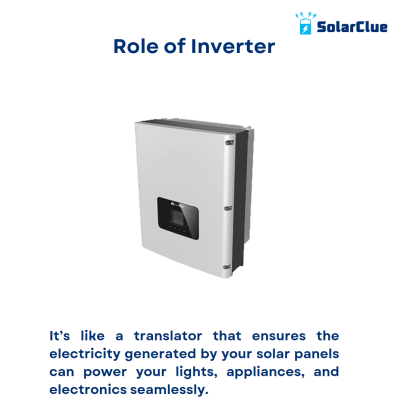
The Role of Inverters:
Solar modules produce DC electricity, but most homes and businesses use appliances and devices that run on AC (alternating current) electricity. That’s where inverters come in.
An inverter’s job is to convert the DC electricity from the solar modules into AC electricity that matches what’s used in your home. It’s like a translator that ensures the electricity generated by your solar panels can power your lights, appliances, and electronics seamlessly.
How Inverters Work:
Inverters use a process called inversion (hence the name) to change the DC electricity’s direction and characteristics. They carefully manage the voltage, current, and frequency of the electricity to match the grid or your home’s electrical system.
There are different types of inverters, but the most common ones for residential solar systems are string inverters and microinverters. String inverters handle the conversion for multiple solar panels at once, while microinverters are attached to each individual panel, providing more precise control and potentially higher energy yields.
Bringing It All Together:
During a sunny day, solar modules absorb sunlight and generate DC electricity. This electricity flows into the inverter, where it’s converted into AC electricity. From there, it can power your home in real-time. If your solar system generates more electricity than you need at any given moment, the excess can be fed back into the grid for others to use, earning you credits on your energy bill through a process called net metering.
Conclusion:
There you have it—a brief look into how solar modules and inverters team up to harness the sun’s energy and turn it into power for your home or business. It’s a clean, renewable way to reduce your carbon footprint and save money on electricity bills over time.
Next time you see those solar panels soaking up the sun, remember they’re not just sitting there—they’re quietly working away to create electricity from one of nature’s most abundant resources. Embracing solar energy isn’t just about technology; it’s about making a positive impact on our environment and our future.
If you’re considering solar for your own home, hopefully, this guide has shed some light on how it all works. Until next time, stay curious and keep exploring the world of renewable energy!
Visit SolarClue® to see the Best Solar Inverters. SolarClue® actively sells solar energy products at discounts of up to 50% on its online marketplace.
1.Why solar modules?
They use a renewable and clean source of energy, reduce greenhouse gas emissions, and lower electricity bills.
2.What are the three types of solar modules?
There are 3 types of solar panels primarily used in the solar industry.
a)Monocrystalline solar panels.
b)Polycrystalline solar panels.
c)Thin film (amorphous) solar panels.
3.What is the life of solar module?
According to the Solar Energy Industries Association (SEIA), solar panels last between 20 and 30 years. Some well-made panels may even last up to 40 years.
4.Which solar type is best?
Monocrystalline solar panels are the best solar panel type for residential solar installations.
5.How do I choose a solar module?
The first step in choosing the right solar panels is to determine how much energy you need to generate. Consider your current electricity usage and how much you would like to offset with solar energy.

